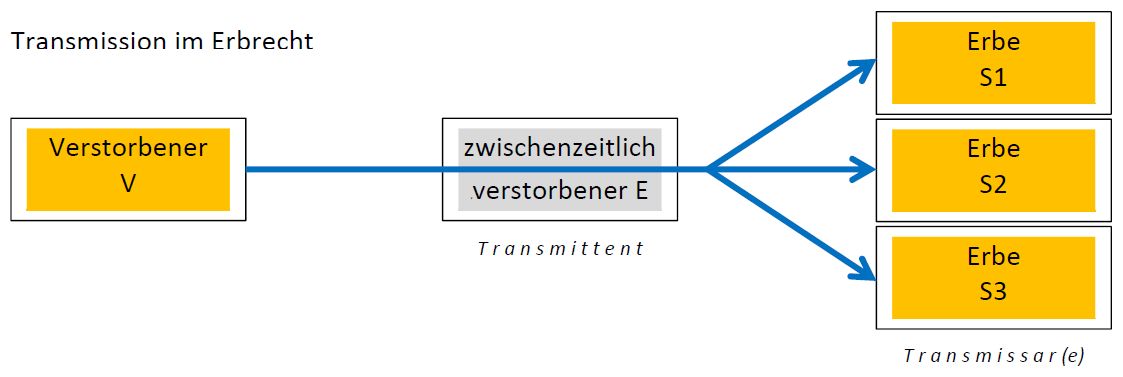Transmission (inheritance law)
Under transmission in inheritance (of lat. Trans "(round) by" and mittere "send") the passing of the law of succession over an heir is understood away on its entitled to inherit heir.
If an heir E has acquired an inheritance right from V, but has not yet been able to take over the inheritance before he has died himself, the inheritance is "passed on" by his person so that the heirs (e.g. S1, S2, S3 ... ) enter into the legacy of E.
Example: Spouses V and E die in a traffic accident. It cannot be determined with certainty who died first. If there is a legal presumption in national law ( presumption of commons ), if the opposite cannot be proven, that several people who have died have died at the same time, the son (S) of E, who was brought into the marriage and not of V, can be adopted would not assert any right of inheritance in the property of V. If V had died just a second before E, in this example V's inheritance would have passed to E at that legal second and after E's death to son S. S would have inherited V and E. The right of inheritance would have been "passed on" by E.
